Signs and symptoms of pain

Nerve pain
Neuralgia, or nerve pain, is commonly occurs with colds, overexertion or rapid movement. This pain in the form of lumbago is familiar to many people. Another cause can be inflammation, but also various other neurological diseases. Neuropathy, alcoholism, diabetes, tumor. Nerve pain also occurs after injuries.
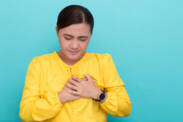
Chest pain
This symptom can have many causes like minor diseases of the muscles and soft structures between the ribs. Also, pain sometimes radiates from the spine and the abdominal organs. However, sometimes the cause is more serious: cardiovascular disease, lung disease, inflammation, anemia. This is a life-threatening condition.
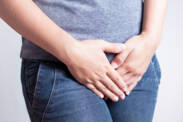
Urethral pain
This symptom most often accompanies inflammation of the urinary tract. In addition to common inflammations, it also occurs in a group of sexually transmitted diseases. Pain in the urethra is also present in cases of urinary stones and cancer.
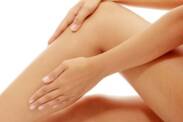
Limb pain
Limb pain can occur after too much strain or an injury. However, often it is a symptom of the disease. And it can be related to bones, joints, muscles, blood vessels or the nervous system. Pain in the limbs also occurs during the growth of children and in pregnant women.
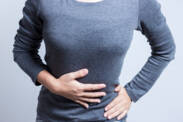
Stomach pain after a meal
Most diseases manifest in pain. In the case of pain after eating, it is similar. Most often it is manifested by some disease. It can be a functional disease of the digestive tract or a food allergy. In some cases, it can indicate a more serious disease. Sometimes the cause is simply overeating.

Pain in the ovaries
Lower abdominal pain localized around the ovaries can have different causes and etiologies of occurrence. How to distinguish the symptoms and when is it advisable to see a doctor?

Heel Pain
Heel pain occurs quite often, and although most of the time there is no serious cause behind it, there can be a number of other underlying causes.

Right Flank Pain
Typical pain caused by the formation of gallstones and bladder stones. It is a symptom of various diseases in the thoracic or abdominal cavity. It also occurs in neurological disorders, or after an accident. Infectious and sexually transmitted diseases are no exception. It also arises during or after running, especially if the person does not regularly run.

Pain when swallowing
Pain when swallowing is a frequent symptom of inflammatory disease in the oral cavity, respiratory tract, but also in the digestive system. In addition to inflammation, it also occurs in oncological processes. A less serious cause is a spasm of the esophagus or its psychogenic constriction. The variety of causes and occurrence over a long period of time requires professional examination.

Back Pain
Back pain is one of the most common reasons to seek medical help and that renders the person unable to work. It is a symptom of a number of diseases.

Shoulder Blade Pain
Pain shooting between the shoulder blades signals a variety of diseases of the organs of the chest or abdomen. The most common culprit is in the spine.

Shooting Pain in the Ears
Pain that radiates into the ears, or ear pain, occurs quite often. The problem may either be directly in the ear, or have a more distant cause.

Groin Pain
Athletes in particular will be familiar with groin pain. The medical term is inguinal pain, and it is the result of overloading the area or an injury. However, pain in this area can also be caused by certain diseases.

Testicular pain
It is a symptom for various diseases of the testicles, but also for diseases outside the genital tract: it indicates inflammation of the testicle, epididymis or prostate gland. It can also be caused by a hernia but also by excessive arousal or prolonged absence of ejaculation. There are many causes.

Ear Pain
Ear pain occurs quite often. Its basis can be inflammation or draughts, but also the cervical spine. Actually, there are a number of other causes.

Eye Pain
Pain is a sign that something is wrong. It is really irreplaceable despite the fact that it is unpleasant. Pain in one eye or in both eyes, pain in the eyelids, or pain around the eye needs to be properly examined. Neglecting this symptom can leave consequences.
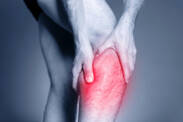
Leg Pain
Leg pain is a common problem and has many causes. It stems from bones, joints muscles, tendons, ligaments, blood vessels, nerves or skin.
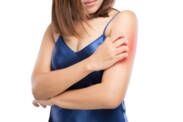
Skin pain
Skin pain is a symptom that occurs when there is an injury to the skin, which may be a cut, burn, scald or frostbite. Of course, skin pain is a typical symptom of skin disease. And this is, for example, a fungal, mycotic disease. However, other diseases are also manifested by it.
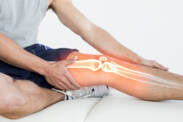
Bone Pain
Bone pain and joint pain are common symptoms of various infections, for example, due to influenza (the flu). It occurs when the body temperature rises and during a fever. It is common in osteoporosis. It also occurs as a consequence of cancer that directly affects the bone or another part of the body. It is also present in trauma and when the bone is overloaded.
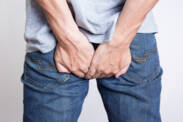
Anal pain
This symptom is common in less serious diseases, for example, hemorrhoids, constipation and diarrhea. The opposite is true for more serious diseases such as chronic fissure, cancer or others requiring surgical intervention. Pain also occurs after an accident. In diabetes, also as a consequence of a sexually transmitted disease.
Pain is both a psychological condition and a symptom that indicates actual or potential tissue damage in the body or a disturbance in the function of an organ in the body. Pains in the body are among the symptoms that are usually among the first to indicate a health problem. Most often, pain arises as a result of some process damaging the body, or it is a disturbance of physiological processes in the body. Women and men usually perceive pain differently.
At the same time, this symptom is manifested by different diseases, depending on where the pain is located and whether it is a local pain or rather a systemic pain. Local pain, for example, includes pain in the joints, bones, muscles, pain somewhere on the abdomen, skin or in a specific location. Systemic pain, such as headaches, sore throats, or overall muscle pain on the body are not usually tied to a local ailment, but indicate problems throughout the body.
The pain can be of varying intensity and can last for varying lengths of time. Depending on the duration, there is acute pain, which usually arises suddenly and is shorter but more intense, subacute pain, which lasts longer, sometimes for several weeks, and is related to a persistent cause of the pain, and chronic pain, which can last for several months or years and is the most difficult to treat. Pain management involves both treating the symptoms and suppressing the pain with medication.
Pain in the abdominal area
People are most often troubled by pain in the abdomen and its surroundings. These can mean really different problems and not always related to the digestive system, although mostly these disorders. What is important is what type of pain it is. As far as abdominal pain after eating is concerned, very often it can be related to ulcers in the stomach, or to diseases of the duodenum or gall bladder. In the case of gallbladder pain, it typically occurs especially after eating a fatty meal, even a few hours apart.
The abdomen hurts before meals in the case of irregular eating, but also in the case of duodenal ulcers, because acids from the stomach get in and irritate the ulcer. But as soon as one eats, the acids start digesting the food and the ulcer pain subsides along with its irritation. Also, abdominal pain before eating can be caused by various inflammatory diseases and infections in the digestive tract, for example, but also by psychological factors that affect gastric neurosis or irritable bowel syndrome.
Abdominal pain can be of different nature, for example, it can be an organ pain that is dull, or somatic pain that is sharp and makes movement impossible. Sometimes it is important to delimit the pain, or it may depend on whether it is moving in a certain direction or shooting out somewhere. Very unpleasant is the colicky pain present in gall bladder or sometimes kidney stones. If abdominal pain is associated with temporary digestive problems, there is no need to be immediately alarmed.
However, if it is acute and intense, or long-lasting and associated with other symptoms, it can be a precursor to a number of different problems. For example, salmonellosis, ulcers, Crohn's disease, cancers of the digestive organs, and sometimes problems with the reproductive system and its organs, for example in women with ovarian cancer. Abdominal pain is also often present in association with other pains, for example in migraine. In any case, they should not be underestimated.
Headaches
Apparently, after abdominal pain, headaches are among the second most common ones that almost every person knows. Similar to abdominal pain, there are several types of headaches. The most common is a tension headache, which is dull and usually affects the entire head, and can fluctuate in intensity throughout the day. The person may feel that it is a pressure or clenching of the head. The second type is migraine pain, which usually affects only half of the head.
This has several phases and is a typical symptom for migraine, which most often afflicts women. On the other hand, a headache in the temples is more common in men, and this pain is related to the so-called Horton's syndrome and is relatively rare. It occurs in attacks on one half of the head and is usually most likely to be felt in the orbit, eye or temples. However, the headache is also a symptom of various other diseases in the body that manifest themselves in this way.
These are very often various inflammatory and infectious diseases, such as tick-borne encephalitis, Lyme disease, tuberculous meningitis, as well as the common flu or typhoid fever. It also occurs in diseases that are no longer commonly seen, such as plague, Ebola or Marburg fever. It is sometimes possible to look for a link between headaches and vision problems or when there is more strain on the eyes, such as myopia, astigmatism or normal eyestrain.
However, headaches can also accompany more serious illnesses or deteriorating health conditions, which is why they should not be underestimated. It is particularly dangerous if it has a sharp onset and sudden onset, or if it is associated with other symptoms of ill health. Many times headaches also afflict people with strokes, adenomas and tumours in the brain, brain abscesses, brain haemorrhage, infective endocarditis or other diseases of the nervous system.
Pain within the musculoskeletal system
The musculoskeletal system includes the skeleton, muscles, joints and limbs, and because this system is so large, pain as a symptom of problems associated with it is very common and widespread. For example, pain in the hips, lumbar spine or shin is accompanied by problems with the intervertebral discs, various spinal disorders of nervous or muscular origin, also injuries such as whiplash, but sometimes also problems with the kidneys or inflammation of the urinary tract.
The back pain itself can also be related to muscle problems and aches, where resting is enough and the symptom will subside, but sometimes there are also pains that radiate here, whether from the abdominal or chest area. The back can also hurt in Lyme disease or in intervertebral disc disease if there is degeneration or destruction of the intervertebral cartilage, as happens, for example, in so-called Bechterev's disease.
Joint pain, in turn, usually occurs either with overload or temporary disability, but can also indicate infectious or inflammatory diseases and processes directly in the joints, for example in arthritis, arthrosis or Bechterev's disease. Many times, however, joint weakness and pain are also related to diseases in other parts of the body and have nothing to do with the musculoskeletal system. This is how febrile illnesses, possibly leukaemia or diseases of the nervous system manifest themselves.
Pain in the legs and feet can indicate problems with joints, bones and muscles, but also, for example, poor blood circulation or problems of neurological origin. Often, however, they are mainly related to metabolic and vascular diseases. In the context of musculoskeletal pain, it is important to distinguish between muscle pain, which can sometimes be a sign of infectious diseases such as paratyphoid fever or malaria, and bone pain, which is the most common manifestation of musculoskeletal problems.
Pain around the abdomen and in the abdominal cavity
Not only directly abdominal pain, but also around it can indicate various health complications and problems. For example, typically pain in the area below the ribs or in the area above the abdomen are symptoms of diseases of the organs located in the abdominal cavity on its sides. With pain in the left suprapubic region, these are problems with digestion, the spleen, duodenum or pancreas.
On the contrary, if a person feels pain in the right area above the abdomen, most often it is various diseases of the liver, gallbladder, sometimes pain from related areas can radiate here, for example, also with problems with the pancreas. But most often this type of pain means, for example, cirrhosis or amebiasis of the liver, gallstones, hepatitis or cholecystitis. In the middle part of the abdomen, problems with the stomach are also manifested, especially ulcers or functional disorders.
Sometimes pain in the hip can be natural, for example, if a person feels a twinge in the hip, it is the result of physical activity to which the body is not accustomed. However, if there are other symptoms, these pains should not be underestimated too much, because there may also be a problem in the musculoskeletal system, possibly radiating pain from the kidneys, which may be troubled by inflammation, or even worse, a tumor. Who feels pain around the navel, most often it is a digestive disease, whether inflammation or ulcers.
In the lower abdomen, problems of both digestive and excretory nature and sometimes several diseases of the genital organs are manifested. In women, this may be inflammation of the ovaries or uterus or endometriosis. In general, pain in this area is also present with inflammation of the urinary tract. On the right side of the lower abdomen, especially inflamed appendix typically hurts, in the middle - gallstones, when the pain is colicky. It is always important to monitor other symptoms as well.
Shooting and radiating pain
Many times it also happens that the pain is not just in one place, but can radiate from a particular place and shoot out in some direction as well. This confuses a lot of people and sometimes makes it difficult for the layperson to localize the pain. For example, pain associated with heart disease, such as angina pectoris or myocardial infarction, shoots up towards the neck. Also some problems with the respiratory system, for example pneumonia or bronchitis, manifest themselves with such pain.
Pain reaches the lower jaw when it does not stop at the neck, but is so intense that it extends further. In this case, too, it is often a heart-related disease, but, for example, it can also be a problem with inflammation of the trigeminal nerve or with a problem with the jaw and the jaw joint directly. Many times such pain also radiates towards the ear. This also arises if there is a problem with, for example, the tonsils, cervical spinal roots or the laryngeal appendage.
Typically, for example, myocardial infarction is also manifested by pain shooting into the shoulder area. Similarly in some neurological diseases, exceptionally in colicky gallbladder pain. Pain can reach the forearm in cardiovascular diseases, but also in neuropathic diseases of a local nature. If the pain radiates even to the fingers, it can be caused, for example, by tennis elbow, possibly also by diabetes mellitus.
A lot of times the pain only gets to the chest when firing. For example, between the shoulder blades often radiates pain caused by gallstones or pancreatitis, but also in myocardial infarction and angina pectoris. If the pain shoots below the right shoulder blade, it may be related to spinal or shin problems, but it may also be related to gall bladder stones or kidney stones. Urinary stones also bother people with pain in the groin area, but more often it is joint or muscle problems of that area.
Pain from the chest up
Pain in the chest or behind the sternum can signal both pulmonary diseases and problems of the cardiovascular system. However, many times they can also be related to overload of the muscle tissue in this area and it is important to recognise whether the pain is acute or chronic. For example, pain on inspiration is associated with tuberculosis or lung cancer, while pain unrelated to breathing may indicate angina or a heart attack, for example.
Sore throats are most often associated with infectious and inflammatory diseases in the upper respiratory tract, such as tonsillitis, laryngitis, influenza or epiglottitis, and the latter in particular can be very dangerous. If the pain occurs while swallowing, it is usually a problem in the vocal cords or throat, such as vocal cord inflammation or tonsillitis. However, this is also the case, for example, with throat cancer, common in smokers.
There is also sometimes pain in the area near the mouth and near the ears, which is caused by the parotid gland. This may be due to various infectious or non-infectious diseases of the parotid gland, or it may also be due to the presence of stones which can clog the outlet of the gland. Directly in the oral cavity, for example, there may be toothaches, but there may also be various irritations on the mucous membranes that hurt on contact with the tongue or food, of which oral aphthae are a very good example.
Eye pain, in turn, afflicts people either directly with eye diseases such as refractive diseases, optic neuritis, glaucoma, cataracts or nerve problems, or may be related to diseases of the eyelid or tear glands. Ear pain may also be felt on the head, most commonly as a result of inflammation in the middle or inner ear, or as a result of draughts. The problem is if hearing deteriorates at the same time, which can sometimes be caused by a tumour.
Pain on excretion
When urinating, various pains also occur quite often. Most often, these pains are directly related to the organs of the excretory system, whether in the case of kidney or urinary stones, or in the case of inflammation and infection of the urethra. At the same time, some infectious venereal diseases also present with pain in the urethra, for example, chlamydial infections. Directly when urinating, pain is one of the symptoms of gonorrhoea or yeast infection, or infection caused by Escherichia coli bacteria.
If there is pain when urinating, it is also in most cases kidney and urinary stones that move in the urinary system and irritate its inner mucosa. Sometimes there is even minor bleeding. In women, however, painful urination or outright pain during urination can also be a symptom of more serious diseases of their reproductive organs, whether it is inflammation of the uterus or a tumour or cancer directly on the uterus.
Pain may also occur during bowel movements. The most common cause tends to be hemorrhoids, in which case the pain is manifested not only during defecation, but sometimes also with other irritation. However, pain when defecating can also be associated with more serious diseases, such as ulcerative colitis, Crohn's disease or even tumours at the end of the digestive system. In women, it may also indicate some female diseases in some cases, such as uterine inflammation.
Sometimes even sexually transmitted diseases, such as gonorrhea, are manifested by this pain. Pain or itching directly in the rectum is typical of the aforementioned haemorrhoids, but also of a more serious problem such as anal fissure, i.e. a tear in the wall of the rectum. Also some idiopathic intestinal diseases are accompanied by this symptom, or even an abscess. Colorectal cancer is also very dangerous, which can manifest itself, among other symptoms, with pain in the rectum.
Common pain conditions in women
Women may suffer most often from breast pain or pain when breastfeeding. If the pain is only when breastfeeding, it is most often an inflammation of the mammary gland called mastitis, or a blockage of the milk duct. When breast pain appears on its own, for example, when there is excess milk production, which is related to breastfeeding, but if the pain occurs without breastfeeding, you should think about an examination by a gynaecologist, because the pain may also be caused by a lump or tumour in the breast.
When menstruating, pain plagues women quite often. Usually they are localized in the lower abdomen, and this is a fairly widespread phenomenon, the cause of which is the body's coping with hormonal changes in the body. However, if this pain is intense and abnormal, it may also indicate some diseases of the uterus. During ovulation, pain usually means directly problems with the ovaries, for example, if there are cysts or some inflammation.
Women are also often affected by pain directly during sexual intercourse, such as pain in or around the vagina or in the lower abdomen. Sometimes the reason may be simple and inadequate moistening of the vagina, so in this case the solution is sufficient lubrication. At the same time, however, a woman should not underestimate this symptom, because it may also be gonorrhoea, yeast or chlamydia infection or other inflammations and infections, for example, directly of the female reproductive organs.
Common pain conditions in men
Men may be troubled by pains associated particularly with their reproductive and reproductive systems. When it comes to testicular pain, it is often of a traumatic nature, i.e. caused by an accident. If the epididymis hurts, this is accompanied by swelling. Since sexually transmitted diseases such as chlamydia or gonorrhoea cannot be ruled out in these cases, and pain caused by a testicular tumour may also be present, it is better not to hesitate to see a urologist.
If there is a painful discharge, the problem may be directly in the urinary tract, for example, with various infections or inflammation, but also in the prostate gland. If it is inflamed, this also manifests itself in painful ejaculation and therefore naturally also in poluria. In the case of complications, chronic prostatitis is already present. At the same time, gonorrhoea, which is a sexually transmitted disease characterised in particular by painful urination and a reddened penis, also manifests itself with painful polyuria.
Skin and nerve pain
On the skin, pain occurs mainly as a result of superficial injuries and wounds due to the disruption of the skin structure. This pain is also transmitted directly to the brain by the disrupted nerve endings. Blisters or calluses are also painful, especially when they are palpated or touched. Psoriasis, chicken pox, perioral dermatitis or some autoimmune diseases, especially skin allergies to various stimuli, are also manifested by pain on the skin.
Nerve pain is a pain that can be present not only in the skin but also in the muscles or mucous membranes, for example in the case of toothache. Sometimes it is difficult to distinguish nerve pain from other types of pain, especially if the site is in deeper structures. However, nerve pain is typical, for example, in spinal pain due to a herniated disc, or pain behind the eyes, where it is most often a neurological type of problem. It also arises in problems of an autoimmune type.









